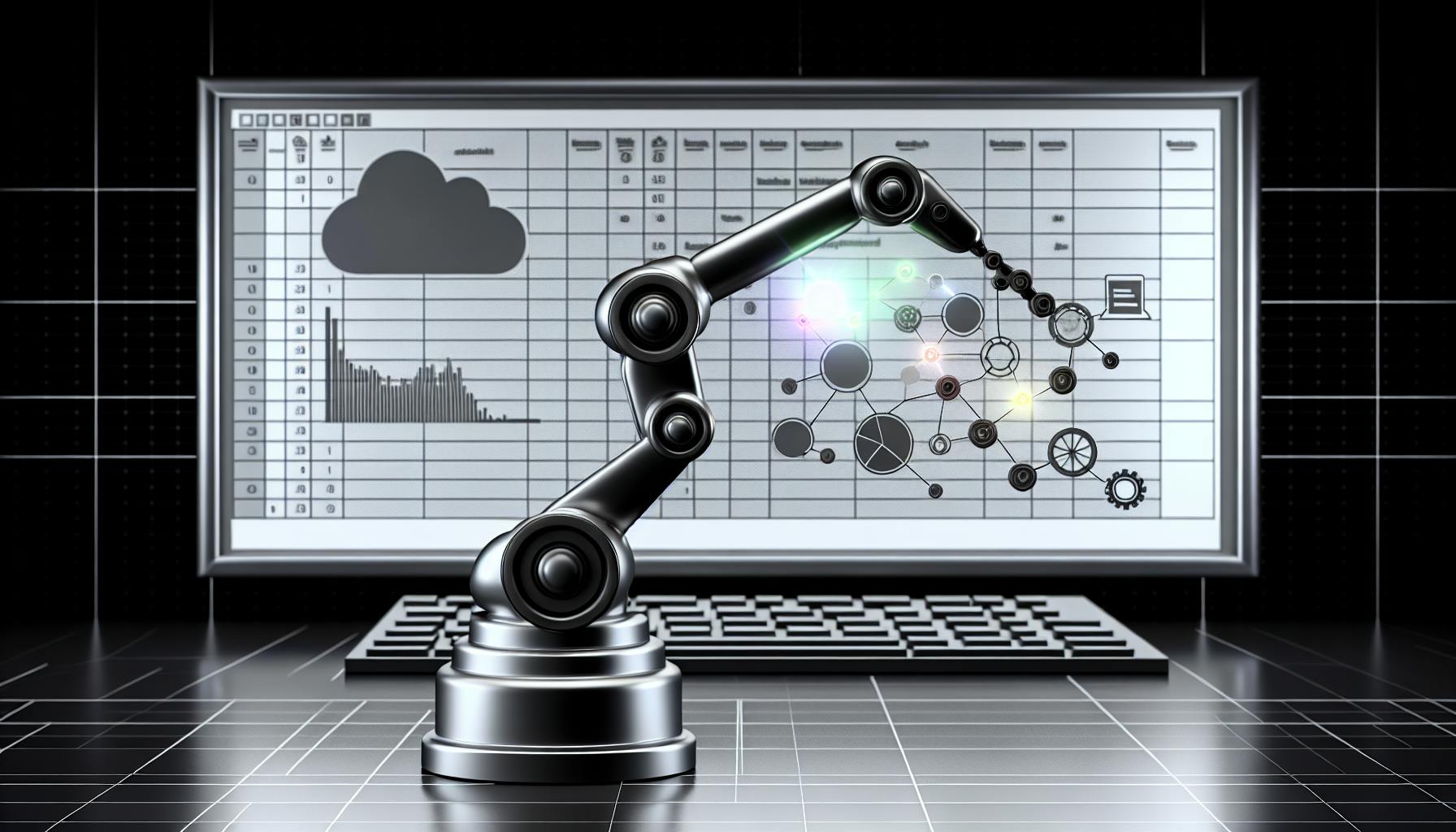HR professionals would agree that leveraging data to gain workforce insights is critical, but many struggle with where to start.
This guide will walk through using Python for essential HR analytics like predicting and reducing employee turnover. Readers will learn Python techniques to simulate scenarios, determine key attrition drivers, and develop actionable strategies for workforce excellence.
We'll cover getting started with Python for HR tasks, preparing and analyzing employee data, building predictive models, strategic planning, and more. Both coding beginners and experts will benefit from this end-to-end workflow for unlocking HR analytics using Python.
Introduction to HR Analytics with Python
HR analytics involves leveraging data to guide workforce planning and talent management decisions. Python is an effective language for HR analytics due to its data analysis capabilities and flexibility.
The Role of Python in HR Analytics and Workforce Planning
Python allows HR professionals to process and analyze employee data to uncover insights. Key applications include:
- Predicting employee turnover to guide retention initiatives
- Identifying high and low performers to optimize talent
- Discovering trends around job satisfaction and engagement
With large datasets, Python enables automation of repetitive tasks like data cleaning and reporting. This saves HR analysts time to focus on higher-level analysis.
Python also provides access to machine learning libraries like Scikit-Learn for building models. These models can classify employee risk levels, predict future headcount needs based on business goals, and more.
Overall, Python empowers HR teams to base difficult workforce decisions on data instead of gut instinct. This drives fairness, objectivity, and optimal outcomes.
Mastering Intermediate Python for HR Analytics
While Python is easy to start, mastering skills like pandas, NumPy, data visualization, and machine learning takes time. But it’s worth the investment for HR analysts.
Intermediate Python allows efficient data wrangling at scale. You can combine, filter, and process diverse employee data sources into a unified format for modeling.
With pandas and Matplotlib, you can quickly generate interactive reports and dashboards to spot trends. This enables better storytelling to executives around workforce risks and opportunities.
Finally, intermediate Python unlocks more advanced model building skills. You can tune algorithms to predict employee flight risk, identify high-potential candidates for promotion, and more with greater accuracy.
Taking analytics to the next level allows HR to provide greater strategic value through workforce optimization. Intermediate Python skills are key to this transformation.
Can Python be used for HR?
Python is gaining traction in the HR analytics space due to its versatility, ease of use, and powerful machine learning capabilities. Here are some of the key ways Python can be leveraged for HR functions:
Employee Churn Prediction
HR teams can build classification models in Python to predict employee turnover. By analyzing past employee data and labels of who left or stayed, models can identify the most important drivers of attrition. Common steps include:
- Data cleaning and preprocessing with Pandas
- Exploring relationships between features
- Encoding categorical variables
- Splitting data into train and test sets
- Applying classifiers like logistic regression, random forests or neural networks
- Evaluating model performance through AUC, precision, recall etc.
These models allow HR to understand and act on the risk of losing top talent.
Job Performance Analysis
Python enables HR analytics groups to study how various factors impact job performance, satisfaction and engagement. Text analysis of employee feedback surveys can surface themes driving these outcomes. Statistical analysis and visualization can uncover trends and patterns.
Workforce Planning
HR planning teams can forecast talent needs and model supply/demand gaps. Python allows complex statistical analysis to be automated and operationalized.
So in summary, Python's data manipulation, modeling and automation capabilities make it very well-suited for HR analytics applications.
Is Python required for HR analytics?
Python is becoming an increasingly valuable tool for HR analytics and workforce planning. Here are some of the key benefits:
Flexibility and Ease of Use
Python is an accessible programming language that allows HR professionals with little coding experience to load, explore, visualize, and model employee data. Its flexibility and simplicity makes Python a great starting point for beginners looking to leverage data analytics.
Powerful Data Analysis Capabilities
Python has a vast ecosystem of data science libraries like Pandas, NumPy, SciPy, and Scikit-Learn. These tools enable complex statistical analysis, machine learning, data manipulation, and predictive modeling on employee data. Python empowers HR to uncover deep insights.
Visualization Options
Python visualization libraries such as Matplotlib, Seaborn, Plotly, enable HR analysts to communicate insights through interactive charts, graphs, and dashboards. Visualizations make trends more interpretable.
Scalability
As data grows over time, Python scales to meet analytical needs. It can handle large datasets with ease to uncover insights for better planning. Python's scalability future-proofs HR analytics.
In summary, Python delivers simplicity, customization and power for unlocking workforce insights. While not required, adding Python to the HR analytics toolkit allows greater leverage of data to drive better planning.
Does HR analytics require coding?
HR analytics does not necessarily require coding skills, but having some programming knowledge can be beneficial. Here are a few key points on the role of coding in HR analytics:
-
Basic HR analytics tasks like generating reports, visualizations, and dashboards often rely on drag-and-drop interfaces and do not require coding. Solutions like Tableau, Power BI, and Excel allow non-coders to work with data.
-
For more advanced analysis involving statistical modeling, machine learning algorithms, etc. coding skills in Python, R, SQL etc. are extremely useful. These allow greater flexibility and customization.
-
Working with large datasets, automation, predictive modeling etc. typically requires coding skills. Python and R are popular languages used.
-
Having some familiarity with SQL helps access data from databases. Python/R can connect to SQL databases for analysis.
-
Coding skills allow creating customized analytics solutions tailored to an organization's specific needs.
-
Partnering an HR professional (with domain knowledge) and a data analyst (with tech skills) can be an effective strategy.
-
Low/no-code analytics platforms are emerging that allow building models with simple drag-and-drop interfaces while automating the underlying coding.
So in summary, while basic HR reporting/visualization does not require coding, advanced analytics and custom solutions do need scripting skills. A collaborative approach combining HR expertise and technical strengths can yield the best results.
What is the use of HR analytics in workforce planning?
HR analytics helps human resources departments collect and analyze employee data to gain insights that inform strategic workforce planning. Specifically, HR analytics enables organizations to:
-
Track key talent metrics like time to hire, cost per hire, quality of hire, and source of hire. Analyzing these metrics allows organizations to optimize their recruiting strategy.
-
Identify top performers and understand what makes them successful. These insights help create targeted development programs to upskill other employees.
-
Predict employee turnover risk. By analyzing factors that contribute to attrition, organizations can proactively retain talent.
-
Optimize learning and development programs by identifying skill gaps across teams. This allows the creation of focused training initiatives.
-
Assess the impact of HR initiatives like wellness programs on employee performance. This demonstrates the ROI of HR spend.
In summary, HR analytics transforms employee data into actionable insights that facilitate data-driven decision making for strategic workforce planning. It enables more productive, engaged, and satisfied workforces.
sbb-itb-ceaa4ed
Preparing Employee Data for Analysis
Loading and Understanding Employee Data
The first step in analyzing employee data with Python is loading the data into a Pandas DataFrame. This allows you to easily manipulate and explore the data in preparation for analysis.
To load a CSV file containing employee data:
import pandas as pd
df = pd.read_csv('employees.csv')
Once loaded, it's important to check:
- The number of rows and columns to understand the data size
- Column data types
- Summary statistics of numerical columns
- Presence of missing values
- Sample raw data rows
This initial inspection provides a high-level view of the data, highlighting any potential data quality issues to address before analysis.
Categorical Handling in HR Datasets
HR datasets often contain categorical columns like department, job title, location, etc. Machine learning algorithms can struggle with these raw categorical variables.
Common encoding techniques include:
- One-hot encoding: Creating binary columns indicating presence/absence of each category
- Ordinal encoding: Assigning integer values to categories based on some ordinal logic
- Target encoding: Encoding categories by the mean value of the target for that category
Choosing the right encoding depends on the type of categorical variable and the analysis task.
Cleaning Data for Accurate HR Analytics
Real-world data often contains inconsistencies, errors, and missing values that require cleaning before analysis:
- Handle missing data: Dropping rows/columns, imputation
- Identify outliers: Visualizations, statistical methods
- Fix formatting errors: Data validation, type casting
- Resolve data conflicts: Address discrepancies across sources
Investing effort in careful data cleaning leads to higher quality analysis results.
Exploratory Data Analysis for HR Insights
Assessing Job Involvement and Performance Rating
Using Python, we can load HR data and visualize the relationship between employees' job involvement and performance ratings. This can reveal insights like:
- Is there a correlation between higher job involvement and better performance?
- Do employees with lower job involvement receive poorer ratings?
- What percentage of top performers have high job involvement?
Visualizing this in a scatter plot with job involvement on the x-axis and performance rating on the y-axis can help assess patterns. Additional analysis like correlation coefficients would quantify the strength of relationship.
This enables data-backed workforce planning decisions regarding improving job involvement initiatives and their potential impact on productivity.
Visualizing HR Metrics for Strategic Insights
Python's Matplotlib and Seaborn libraries provide accessible data visualization capabilities to create plots like:
- Bar charts showing employee turnover rates over time
- Heatmaps visualizing employee churn rates segmented by tenure and department
- Line plots tracking monthly hiring rates year-over-year
Visualizations reveal trends and patterns. For example, seeing if employee turnover has increased after a merger. Or which departments have highest churn rates.
Strategic insights can inform decisions like adjusting retention programs, changing hiring practices, realigning team structures to optimize productivity.
Feature Selection for Workforce Analytics
Selecting the most relevant HR metrics to focus analysis on is crucial for workforce planning. Python's Scikit-Learn provides feature selection techniques like:
- Univariate statistical tests to quantify metric relevance
- Model-based selection to pick features that best predict employee churn
This enables concentrating analytics on key drivers. For example, metrics like job satisfaction, manager relationship, compensation could have high correlation with employee retention.
Feature selection leads to more accurate predictive models. And it lets us derive data-backed insights on the strongest predictors of workforce outcomes.
In summary, Python provides accessible data analysis and visualization capabilities to unlock HR insights for strategic planning. Techniques like correlation analysis, segmentation, feature selection combined with plots enable deriving workforce intelligence.
Predicting Employee Turnover with Python
Employee turnover can be costly and disruptive for organizations. Using Python, HR professionals can analyze employee data to predict turnover risk. This allows for targeted retention programs.
Creating a Train-Test Split for Model Building
To evaluate model performance, the data must be split into training and test sets. The model is fit on the training data, then makes predictions on the test data to simulate performance on new data. Common test set sizes are 20-30% of total data.
from sklearn.model_selection import train_test_split
X_train, X_test, y_train, y_test = train_test_split(X, y, test_size=0.3, random_state=42)
Model Creation: Decision Tree Classification
Decision trees classify data by making splits based on feature values. They are interpretable and handle nonlinear relationships.
from sklearn.tree import DecisionTreeClassifier
model = DecisionTreeClassifier()
model.fit(X_train, y_train)
Decision trees can be prone to overfitting. Setting max depth, min samples per leaf, or max leaf nodes can improve generalization.
Evaluating Models with Classification Reports
The classification report summarizes precision, recall, F1 score per class. It provides insight into model performance.
from sklearn.metrics import classification_report
print(classification_report(y_test, y_pred))
precision recall f1-score support
0 0.85 0.90 0.87 150
1 0.80 0.70 0.75 100
avg / total 0.83 0.83 0.83 250
Precision is accuracy of positive predictions. Recall is percent of actual positives predicted correctly. F1 score balances both.
Hyperparameter Tuning and Cross-Validation for Reliable Predictions
Hyperparameters like max depth can be tuned with cross-validation to prevent overfitting and improve performance. Cross-validation splits data into folds, trains on all but one fold and tests on the remaining fold. This repeats for each fold and results are averaged.
from sklearn.model_selection import GridSearchCV
params = {'max_depth': [3, 5, 7]}
grid_search = GridSearchCV(DecisionTreeClassifier(), params, cv=5)
grid_search.fit(X_train, y_train)
The best params per the tuning can be used to re-fit the model and make predictions. This helps prevent overfitting to the training data.
Strategic Workforce Planning Using Python
Leveraging predictive analytics and data science techniques in Python can provide valuable insights to inform strategic workforce planning and talent management decisions.
Simulating Scenarios for Workforce Expansion
Python's extensive data analysis libraries allow HR professionals to model potential growth scenarios. By varying inputs like hiring rates, attrition rates, and productivity targets, Python scripts can simulate the implications on headcount, costs, and other workforce metrics.
This enables asking "what-if" questions to stress test expansion plans. For example, how would boosting hiring by 15% next quarter impact budget forecasts? Running simulations provides data to optimize hiring and training programs.
Determining Important Features for Predicting Attrition
Understanding the most significant drivers of employee churn is crucial. Python machine learning libraries like scikit-learn make it possible to analyze various factors that potentially influence turnover.
Techniques like decision tree classifiers can quantify which features like compensation, tenure, performance ratings etc. are most important for predicting attrition. These insights allow focusing retention efforts on the issues that matter most to employees.
Developing Strategies to Reduce Employee Turnover
The ability to predict potential churn based on significant factors allows HR to get proactive with targeted interventions. Python scripts can score each employee's likelihood to quit based on their specific data attributes.
HR can then develop strategies to reduce turnover by addressing pain points of flight risks. For example, special retention bonuses for high performers showing disengagement signs. Machine learning guides data-driven retention initiatives.
Conclusion: Harnessing Python for HR Excellence
Summarizing the Power of Python in HR Analytics
Python provides a versatile and accessible platform for conducting HR analytics and workforce planning. Key benefits include:
-
Flexibility to handle diverse employee datasets and HR metrics like performance, retention, and satisfaction. Python's extensive libraries allow customized analysis.
-
Powerful machine learning capabilities to uncover insights, trends and predict outcomes from employee data. Models can be built to forecast attrition, hiring needs etc.
-
Simplicity even for non-programmers, with many beginner-friendly libraries. Python skills are easy to pick up for HR professionals.
-
Integration with existing tech stacks since Python interfaces well with SQL, Excel, Tableau and other platforms used in HR.
-
Cost-effectiveness. As an open-source option, using Python is budget-friendly for HR departments.
In summary, Python empowers HR teams to tap deeper into their workforce data, driving better decisions.
Future Directions in HR Analytics with Python
As adoption grows, Python will enable more advanced HR analytics:
-
Sentiment analysis to systematically track employee satisfaction from workplace surveys, reviews etc.
-
Improved predictive models and simulations for long-term workforce planning using deep learning algorithms.
-
HR chatbots and virtual assistants to provide self-service options to employees using Python's NLP capabilities.
-
Seamless analytics integration with HR Information Systems through Python backend development.
-
Transitioning from descriptive metrics to prescriptive analytics - recommending optimal actions to managers.
The future is bright for Python's role in data-driven, strategic HR. Mastering Python will be key for HR professionals aiming to stay ahead.


